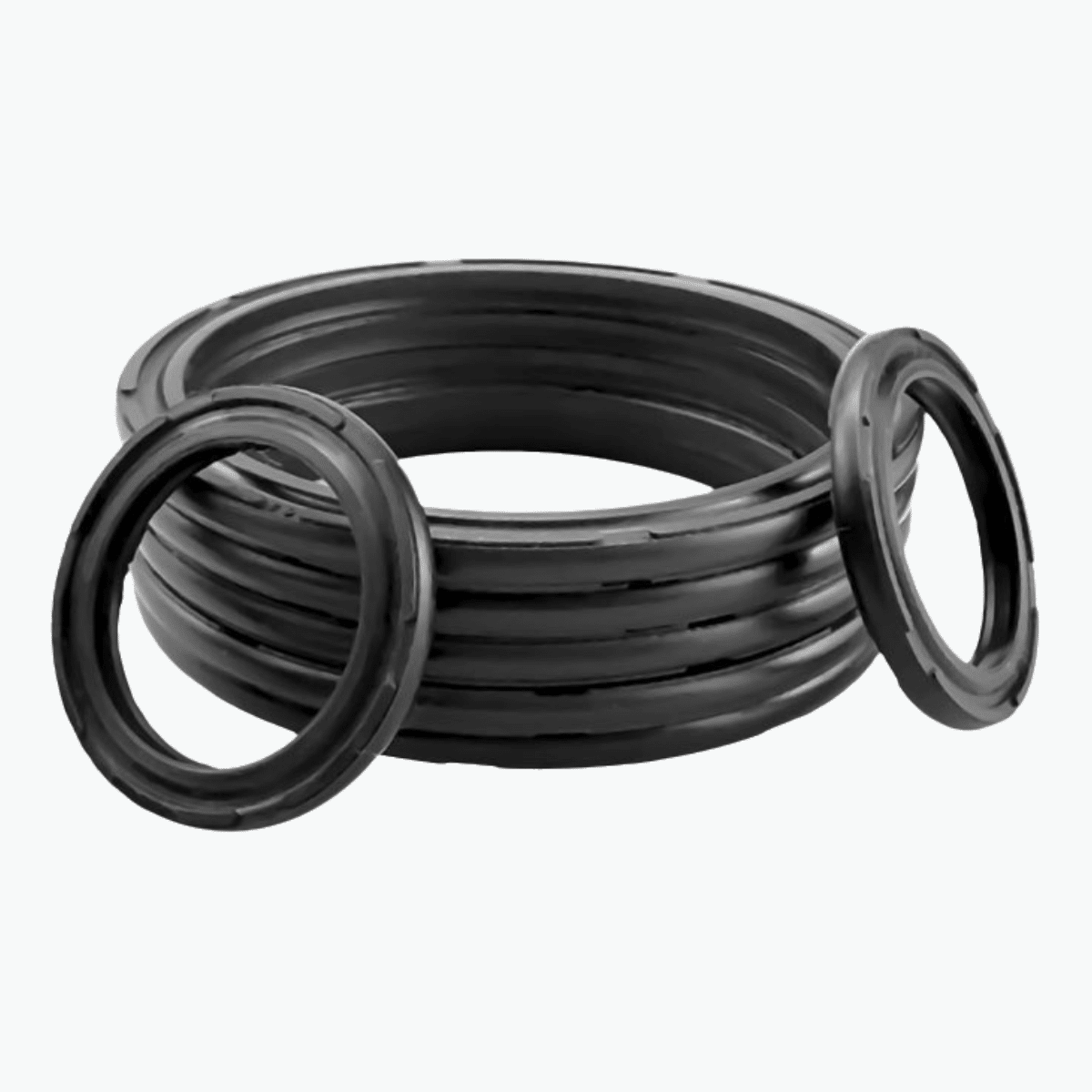Choosing the wrong seal can lead to air leaks and costly downtime.
A piston seal holds air pressure inside the cylinder; a rod seal prevents leaks along the rod. Both are critical but serve different purposes.
Here's how to select the right seal for your pneumatic application.
What’s the Main Difference Between a Piston Seal and a Rod Seal?
They operate in different areas of the cylinder.
Guarnizioni del pistone are installed in the bore to manage chamber pressure.
Guarnizioni per stelo are placed at the cylinder head to stop air leakage along the moving rod.

They work together to maintain system efficiency. See the full breakdown in our pneumatic cylinder seal guide.
What Are the Key Functional Differences?
| Caratteristica | Guarnizione del pistone | Guarnizione dell'asta |
|---|---|---|
| Posizione | Alesaggio interno del cilindro | Cylinder head |
| Funzione | Seals pressure between chambers | Prevents external air leakage |
| Movement | Static or dynamic | Always dynamic |
| Failure symptoms | Blow-by, reduced stroke | Visible air leak, reduced pressure |
Consider adding guarnizioni tergicristallo antipolvere for added protection in dirty environments.
Which Materials Are Best for Each Seal?

I migliori materiali per le guarnizioni dei pistoni
| Materiale | Benefits | Caso d'uso |
|---|---|---|
| NBR | Flexible and low cost | General air cylinders |
| TPU | Resistente all'usura | Automation systems |
| PTFE | Basso attrito | Cilindri ad alta velocità |
| FKM | Heat and chemical resistance | Industrial cylinders |
More info: Piston Seal Types & Materials
I migliori materiali per le guarnizioni degli steli
| Materiale | Benefits | Caso d'uso |
|---|---|---|
| NBR | Budget-friendly | Low-speed cylinders |
| TPU | Long service life | Heavy-duty cycles |
| FKM | Ambienti estremi | Chemical or high-temp use |
Explore options: Produttore di O-ring personalizzati
When Should You Use a Piston Seal vs. a Rod Seal?
Use a piston seal for internal chamber sealing.
Use a rod seal to seal around the moving piston rod.
In most cylinders, you’ll use both. For comparison: Piston vs Rod Seal
How to Prevent Common Seal Failures?
- Utilizzo PTFE o TPU for high-speed or friction-prone systems
- Replace seals every 6–12 months
- Utilizzo guarnizioni tampone to absorb pressure spikes
Dove acquistare guarnizioni per pistoni e steli di alta qualità?
Forniamo:
- Rod seals, piston seals, buffer & wiper seals
- Materiali: NBR, TPU, FKM, PTFE
- OEM specs and custom orders
📩 E-mail: [email protected]
📞 WhatsApp: +86 17622979498
Conclusione
Rod seals stop leaks along the rod; piston seals maintain pressure in the chamber. Use both for reliable pneumatic performance.
Browse Related Guides


